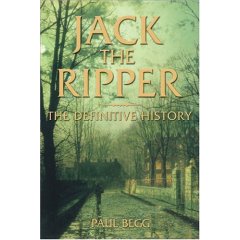
Jack the Ripper: The Definitive History -- by Paul Begg -- by Paul Begg
Avoiding wild conspiracy theories, this is the book with the facts behind one of the most infamous and grisly episodes of the Victorian era. Provides a detailed yet readable, blow-by-blow account of the crimes - who saw and did what, where and when.
Unique - not full of wild theories, is for those who simply want to know what happened and to understand why the Ripper is remembered today. Author is a renowned "Ripperologist" - editor of The Ripperologist magazine and author of several previous books on Jack the Ripper.
In 1888, the Whitechapel area of London was transfixed by a series of brutal murders. The horrific deaths of five women, all of whom were prostitutes, have been linked to various suspects, including an American Doctor, a businessman from Liverpool, Prince Albert and Queen Victoria's grandson. To this day, the identity of the killer remains unknown. Whoever he was, the murderer taunted the police with letters, signed with a pseudonym destined to strike a chill in our hearts even now, over one hundred years later, Jack the Ripper. Jack the Ripper: the Definitive History is the one book to which people will turn for the facts behind one of the most infamous and grisly episodes of the Victorian era. Up-to-date with all the latest findings, it chronologically recounts the events, giving a detailed account of the lives and movements of each of the victims. It reveals important insight into the mystery surrounding the true identity of the Whitechapel Murderer by discussing some fascinating and interesting facts. Ripper expert Paul Begg draws on his vast knowledge of the case to give the fullest account of the story to date.
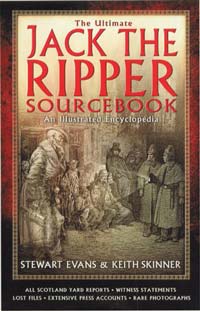
The Ultimate Jack the Ripper Sourcebook: An Illustrated Encyclopedia by Stewart P. Evans, Keith Skinner -- Stewart P. Evans, a retired police officer and curator of the Suffolk Police
Museum in England, has researched the Whitechapel Murders for more than thirty
years. He is the coauthor of Jack the Ripper: First American Serial Killer.
Keith Skinner, for three decades a historical researcher of the Ripper case, is
coauthor of such titles as The Ripper Legacy and The Jack the Ripper A to Z. by Stewart P. Evans, Keith Skinner -- Stewart P. Evans, a retired police officer and curator of the Suffolk Police
Museum in England, has researched the Whitechapel Murders for more than thirty
years. He is the coauthor of Jack the Ripper: First American Serial Killer.
Keith Skinner, for three decades a historical researcher of the Ripper case, is
coauthor of such titles as The Ripper Legacy and The Jack the Ripper A to Z.
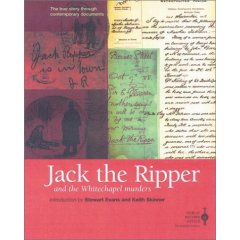
JACK THE RIPPER and the Whitechapel Murders [BOX SET] The greatest unsolved mystery told for the first time through use of contemporary police and government records. Between the months of August and November 1888 six prostitutes were found murdered in London's East End. The killer, who became known as "Jack the Ripper" was never found, and the story remains an enduring source of fascination over a hundred years later. This pack tells the story through exact facsimiles of key documents from the Metropolitan Police and Home Office files held at the Public Record Office. An eight page illustrated introduction by two of the world's leading experts on the case provides a full explanation of the documents and sets them in their historical context. The greatest unsolved mystery told for the first time through use of contemporary police and government records. Between the months of August and November 1888 six prostitutes were found murdered in London's East End. The killer, who became known as "Jack the Ripper" was never found, and the story remains an enduring source of fascination over a hundred years later. This pack tells the story through exact facsimiles of key documents from the Metropolitan Police and Home Office files held at the Public Record Office. An eight page illustrated introduction by two of the world's leading experts on the case provides a full explanation of the documents and sets them in their historical context.
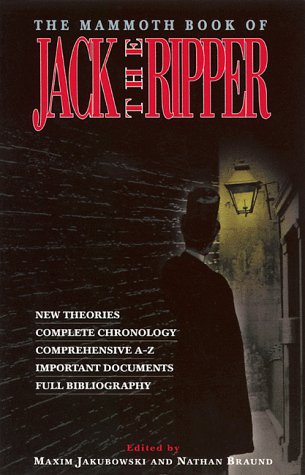
The Mammoth Book of Jack the Ripper  by Maxim Jakubowski (Editor), Nathan Braund (Editor) by Maxim Jakubowski (Editor), Nathan Braund (Editor)
Enlisting in the hundred-year-old debate about the identity of the world's first serial killer, this Mammoth investigation introduces the facts of the famous case and presents some of the most convincing, if conflicting, theories of the murderer's identity.
 Jack the Ripper: Letters from Hell Jack the Ripper: Letters from Hell  by Stewart P. Evans by Stewart P. Evans
Between August and November 1888, 6 prostitutes were found mutilated in Whitechapel in the east end of London. The murders provoked massive interest in the press, and dozens of letters appeared, all of which claimed to have been written by the killer.
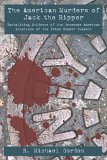
The American Murders of Jack the Ripper: Tantalizing Evidence of the Gruesome American Interlude of the Prime Ripper Suspect -- Four American women dead at the hands of a prime suspect in the Jack the Ripper case. -- Four American women dead at the hands of a prime suspect in the Jack the Ripper case.
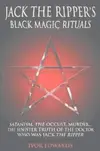
Jack the Ripper's Black Magic Rituals  by Ivor J. Edwards -- Satanism, black magic, serial murder: a startling new study of Jack the Ripper that maintains that the man behind the crimes was Dr. Robert Donston Stephenson, an army surgeon, occultist, and magician, who may have also murdered and dismembered his own wife before his terrible spree in Whitechapel began. Black Magic Rituals takes the reader through the events at the center of the Ripper’s reign of terror, uncovering a twisted mélange of murder and black magic. by Ivor J. Edwards -- Satanism, black magic, serial murder: a startling new study of Jack the Ripper that maintains that the man behind the crimes was Dr. Robert Donston Stephenson, an army surgeon, occultist, and magician, who may have also murdered and dismembered his own wife before his terrible spree in Whitechapel began. Black Magic Rituals takes the reader through the events at the center of the Ripper’s reign of terror, uncovering a twisted mélange of murder and black magic.
The Bell Tower: The Case of Jack the Ripper Finally Solved... in San Francisco by Robert Graysmith 1896: The Jack the Ripper murders stop as mysteriously as they started. Five years later, in a San Francisco church, brutally murdered priests, choirboys,and parishioners begin to appear. The pastor, an English priest, bears an uncanny resemblance to the one eyewitness report of the sole survivor of a Jack the Ripper attack in London years earlier. But another man has already been arrested, tried, and convicted for the San Francisco slayings.
Jack the Ripper: The Final Solution (1995) VHS
A & E Biography - Jack the Ripper VHS
The Diary of Jack the Ripper (1993) VHS Reading from the infamous murderer's diary, a macabre record of obsession, horror and madness, Jack the Ripper's own words are the basis for this dramatized analysis, overturning all previous theories and investigations.
|
|
Jack the Ripper
True Crime Book Watch!
Watch for new True Crime books as they are published!
Jack the Ripper is an unidentified serial killer(s) who struck between August and November 1888 , in London’s East End community of Whitechapel, (population 76,000), a depressed area, with 39.2 percent of its citizens living in poverty.
Jack the Ripper there have been over 400 suspects in the Ripper case.
- Prince Albert Victor the grandson of Queen Victoria
- Dr. William Gull a Royal physician
- Dr. Sir John Williams the founder of the National Library of Wales in Aberystwyth and a personal friend of Queen Victoria, and her daughter Princess Beatrice's gynecologist
- Montague John Druitt - Barrister and teacher
- Walter Sickert – Artist
- Francis Tumblety, a US "quack" doctor, arrested for gross indecency at the time of the murders alleged to have kept a collection of female organs.
- Lewis Carroll, born Charles Lutwidge Dodgson, author of " Alice's Adventures in Wonderland"
- Prince Albert Victor, a royal family ladies man.
- James Maybrick, a murdered cotton merchant
Jack the Ripper is the first serial killer to achieve worldwide notoriety. Whitechapel industries were mainly boot and cabinet manufacturing shops. Employment was difficult to find, and jobs had poor working conditions, long hours, and low wages. Whitechapel was heavily inhabited with foreigners, and drifters. Criminals, prostitutes, and the poor lived in lodging houses. Whitechapel had sixty-three brothels, and more than 1,200 prostitutes. Many women working for low pay resorted to prostitution to survive. Prostitution had not a crime in Victorian England. Parliament cracked down on houses between 1885 and 1914, resulting in the closure of brothels which left women on the streets and at risk. The poor East Enders were ignored by affluent London society, until the murders drew attention to their plight.
The victims were poor, aging, prostitutes with drinking problems. They were strangled before their throats slashed. Their organs were surgically removed from their mutilated bodies. The murders occurred only on weekends. There were no witnesses and few leads. Local tradesmen beat the streets at night. Bystanders were questioned. Everyone was suspicious of everyone else especially anyone talented with knives. Since it was believed that no sane person could commit these crimes the mentally ill became suspect. Attempts were made to round up the mentally unbalanced of Whitechapel and send them to asylums. Those who confessed to be the Whitechapel killer were fined or sent to an asylum. The popular theories were that the killer was either a religious fanatic ridding the world of prostitution or a medical doctor. The doctor theory was based on the anatomical knowledge the murderer showed.
The five murders consistently attributed to the killer are:
"Polly" Mary Ann ( Walker) Nichols was born on August 26, 1845, and murdered on Friday, August 31, 1888. she had no missing organs. Nichols was found on a public street.
Eliza Ann "Dark Annie" (Smith) Chapman was born September 1841, and killed on Saturday, September 8, 1888. "Dark Annie" was murdered in daylight and found in a back yard. Her uterus was taken out. At her September 26 inquest, Dr. Wynne Baxter said the procedure could not have been performed by a butcher but someone with anatomical/ pathological post-mortem expertise. Other medical experts disagreed claiming the killer showed little or no medical knowledge.
Elisabeth “Elizabeth” Stride (Gustafsdotter ), "Long Liz" born in Sweden on November 27, 1843 was killed Sunday, September 30, 1888. She was not missing any organs.
Catherine Eddowes , aliases "Kate Conway" and "Mary Ann Kelly," born April 14, 1842, was killed on Sunday, September 30, 1888 within the City of London. Her uterus and a kidney were removed and she had facial mutilations. During her mid-October 1888 inquest, medical experts argued about the level of expertise displayed by the killer. Some experts maintained that the killer was an experienced surgeon while others claimed it could have been a butcher.
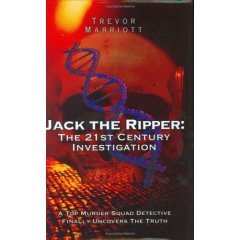 Former Bedfordshire police murder squad detective Trevor Marriott investigated the murders for 10 years said both victims were found within 12 minutes. Former Bedfordshire police murder squad detective Trevor Marriott investigated the murders for 10 years said both victims were found within 12 minutes.
"It is highly unlikely that the murderer would have stopped a second time to murder a second victim in such a short space of time"
Whitechapel had a large Jewish immigrant population of about 35,000 Russian and German Jews escaping religious persecution. Jewish immigration increased anti-Semitism in England. Local tensions grew as it was alleged that the jobs were jobs going to new-comers.
After the two murders early September 30, Constable Alfred Long found a bloodstained scrap of fabric cloth from Eddowes' apron. Above a message was written on the wall in white chalk:
"The Juwes are the men That Will not be Blamed for nothing." Or “The Juwes are not The men That Will be Blamed for nothing."
Rumors circulated that the killings were committed by a Jew called “Leather Apron." Fearing an Anti-Semitic riot, Police Superintendent Thomas Arnold ordered the graffiti erased. The graffiti was removed by 5:30 a.m. but
City of London Police officers disagreed with Arnold's order, the graffiti should have been documented with a photograph, first but it was not.
Mary "Marie Jeanette” Jane Kelly, aka "Ginger" was younger than the other victims. She was born in Ireland in 1863 and murdered indoors on Friday, November 9, 1888, with extensive mutilations. Her heart was missing and her internal organs were removed and left in her room.
Former Bedfordshire detective Marriott believes there were more victims.
"My findings suggest that there may well have been two other similar murders after the police closed their file."
Police and newspapers received thousands of letters. Hundreds of letters claim to be from the killer. None of the letters have been established as credible.
A "Dear Boss" letter , to the news dated September 25, 1888, received September 27, promised to "clip the ladys ears off." On September 29, it was forwarded to Scotland Yard. Police published the letter October 1, hoping the handwriting would be recognized.
On October 1, 1888, a "Saucy Jack" postcard was received by the news with similar handwriting to the "Dear Boss" letter. It stated that Stride and Eddowes were killed near one another. The letter believed to be a hoax by most experts, was postmarked more than 24 hours after the murders. It is believed these letters were created by a journalist trying to sell papers.
George Bernard Shaw made a statement about the press in the Star:
“Whilst we Social Democrats were wasting our time on education, agitation and organization, some independent genius has taken the matter in hand, and by simply murdering and disemboweling four women, converted the proprietary press to an inept sort of communism.”
A letter "From Hell" postmarked October 15, 1888 was received by the Whitechapel Vigilance Committee on October 16, along with half a human kidney in ethyl alcohol. A doctor determined the kidney was similar to the kidney taken from Eddowes.
On October 29 1888 another letter was mailed.
"Old boss you was rite it was the left kidny I was goin to hopperate agin close to your ospitle just as I was goin to dror mi nife along of er bloomin throte then cusses of coppers spoilt the game but I guess I wil be on the job soon and will send you another bit of innerds. Jack the Ripper."
By early November the hysteria and terror grew. East End arrests drew crowds and innocent men were almost hung.
Dr. Francis Tumblety, a quack from the United States was linked to the killings because he was rumored to keep female organs. He was arrested once for indecency.
Another suspect was Queen Victoria's grandson, Prince Albert Victor. There were unverified stories about him living with a mistress in the tawdry East End. Other experts content he wasn't near London when the murders occurred.
Some believe James Maybrick, a 19th Century cotton merchant from Liverpool was the killer. The diary alleged to belong to him made public in the early 1990’s, contains a confession to the killings. Its authenticity is a matter of debate.
 On a May 2001 research mission at Scotland Yard for a Scarpetta novel, after Patricia Cornwell, a detective and novelist met expert Deputy Assistant Commissioner John Grieve Ripper she became involved with the case. Research was difficult due to the English police practice during the 19 th century of destroying all reports when the case detective retires. In her book, Portrait of a Killer: Jack the Ripper - Case Closed, she accuses eccentric British impressionist artist, Walter Sickert, Whistler’s apprentice and an associate of Degas, His art depicted women being assaulted. Sickert was cremated when he died in 1942. The Virginia Institute for Forensic Science and Medicine ( Cornwall helped found with a $1.5 million endowment) investigated 250 Ripper letters. She purchased over 30 of his art pieces and even cut one painting up in an attempt to uncover evidence.Cornwell believes his 1908 painting of a murdered prostitute was in the same position victim Mary Kelly was found in. Comparison of notes from the Ripper and Sickert’s papers, drawings and paintings, led to a salivary mitochondrial DNA match. She purchased Sickert's artwork and writings and developed a profile based in part on his drawings and paintings, depicting brutal abuse of nude females. On a May 2001 research mission at Scotland Yard for a Scarpetta novel, after Patricia Cornwell, a detective and novelist met expert Deputy Assistant Commissioner John Grieve Ripper she became involved with the case. Research was difficult due to the English police practice during the 19 th century of destroying all reports when the case detective retires. In her book, Portrait of a Killer: Jack the Ripper - Case Closed, she accuses eccentric British impressionist artist, Walter Sickert, Whistler’s apprentice and an associate of Degas, His art depicted women being assaulted. Sickert was cremated when he died in 1942. The Virginia Institute for Forensic Science and Medicine ( Cornwall helped found with a $1.5 million endowment) investigated 250 Ripper letters. She purchased over 30 of his art pieces and even cut one painting up in an attempt to uncover evidence.Cornwell believes his 1908 painting of a murdered prostitute was in the same position victim Mary Kelly was found in. Comparison of notes from the Ripper and Sickert’s papers, drawings and paintings, led to a salivary mitochondrial DNA match. She purchased Sickert's artwork and writings and developed a profile based in part on his drawings and paintings, depicting brutal abuse of nude females.
"Sickert had contempt of all people. He thought he was smarter than everybody."
Cornwell's claims 99 percent certainty that Sickert, 28 when the killings began, is Jack the Ripper. Scotland Yard suspected Sickert as well. Cornwell believes Sickert stopped killing in Whitechapel when it became too risky but kept killing. She investigated unsolved homicides in the English countryside, and a French coastal town.
"I am suspicious that he also killed children. There is a sort of pedophiliac interest ..."
Michael Gordon, author of "Alias Jack the Ripper: Beyond the Usual Whitechapel Suspects” says Jack the Ripper didn't write the letters.
Marriott disagrees with the suspects named by researchers and investigators.
"Most of the main suspects put forward aren't worthy of being classed as suspects. Some of them have been hyped up by publicity and media over the years to suit their own means."
Tony Williams claims Dr. Sir John Williams, his grandmother's great-great uncle, born at Blaenllynant, Gwynfe, Carmarthenshire, in 1840, was the killer. Sir John, the founder of the National Library of Wales in Aberystwyth and a personal friend of Queen Victoria, and her daughter Princess Beatrice's gynecologist treated all the victims. He performed an abortion on Mary Anne Nichols in 1885. As a relative, Tony Williams had access to Sir John's personal effects at the National Library of Wales including a large knife, he believes was used to commit the murders.
"I started researching Sir John because I was proud he was my relation. While I was researching, I read in his diaries and medical notes in the national library that he knew the Ripper's first victim Mary Anne Nichols. Other diaries and medical notes in London and Cardiff revealed that Sir John knew all five victims, had treated them all and had links to Whitechapel where the murders were committed. I think he was a Jekyll and Hyde-type character who may have been driven to commit murder because his wife could not have children. He was also known to be working on a cure for his wife's problem. I believe that knife, which still rests at the National Library of Wales may contain clues to the Whitechapel murders. If that knife could be examined using modern DNA techniques maybe there would be links to some of the victims."
A National Library of Wales spokesman dismissed Williams' research.
"The library thinks there's no basis for it at all. We're very proud of the contribution Sir John Williams made in bringing the national library to Aberystwyth."
Artists with songs about Jack the Ripper: Nick Cave & The Bad Seeds , Falconer , Grim Reaper , Grim Reaper , Iced Earth , Iced Earth , Judas Priest , Judas Priest , Roland Kirk , Roland Kirk , The Legendary Pink Dots , The Legendary Pink Dots , Link Wray , Link Wray , LL Cool J , LL Cool J Macabre Macabre , Motörhead , Motörhead , Morrissey , Morrissey , My Chemical Romance , My Chemical Romance , Nationalteatern , Nationalteatern , Queensryche , Queensryche , Spitalfield , Spitalfield , Kanye West , Kanye West , and The White Stripes , and The White Stripes . .
Post-mortem report written by Dr. Thomas Bond after he examined the remains of Mary Jane Kelly. The report was lost until 1987, when it was returned anonymously to Scotland Yard.
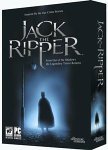
Jack The Ripper by Dreamcatcher Interactive
While writing a series of articles about horrible murders in the Low Side District of New York, the young reporter, Jimmy Palmer, will soon become involved in a game of cat and mouse with an illusive and deadly character--Jack the Ripper. Along Palmer's dark journey he will foster a friendship with a young singer, Abigail, the "Irish Nightingale," and meet numerous other colorful characters of this poor district. Beginning with the search of witnesses to the crimes, Palmer's snooping will soon lead him to investigate suspects. His daily editorials trigger the interest of the serial killer himself, who begins to correspond with Palmer via the newspaper, leading Palmer to surmise that this killer is the infamous Jack the Ripper! A thrilling experience with realistic and unforgettable characters and a compelling storyline Virtools Engine allows for special effects and rich, beautiful, and detailed graphics with a user-friendly interface A mass-appeal theme based on true historical events Exploration, inventory-based gameplay, suspenseful storyline Numerous puzzles of varying complexity--environmental, tactile, auditory. |
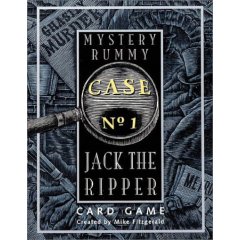
Jack the Ripper (Mystery Rummy, Case No. 1) (Cards)

Jack The Ripper Costume
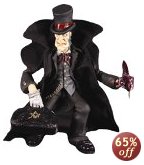
Jack the Ripper 10" Action Figure

Sources:
BBC
CNN
Time |
Copyright Kari Sable 1994-2006
|
Young Killers
Today's Deals

Jack the Ripper (2003)  DVD DVD
There was a time when just the whisper of the name Jack the Ripper struck terror into the hearts of the brave. It was autumn, the fall of 1888, and an evil monster, responsible for committing a series of gruesome murders, was stalking the streets of London. The crimes have never been solved to this day and the story of Jack the Ripper is still the stuff of nightmares. Conspiracy theories abound and suspects literally range from British Royalty to the lowest of the low, from native East Enders born within the sound of Bow Bells to an American "Quack" Doctor who regularly visited the streets of White Chappel. There is not a soul worldwide who can resist the challenge of unmasking Jack the Ripper. This program has been presented in such a way as to help both learned experts and amateur sleuths alike to do just that! The facts are placed before you and the conspiracies that have emerged are all considered on their various merits. Visit for yourself the murder sites and make your own judgements on the evidence available, study the archives and police records and meet the women who fell victim to Jack the Ripper’s vicious blade. The atmosphere of Victorian London is terrifyingly realistic, so be prepared, this is a journey of discovery that will chill you to the very marrow, and you will never be able to forget Jack the Ripper and his evil deeds for as long as you live…
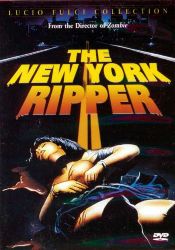
The New York Ripper (1982)  DVD DVD

History's Mysteries - Hunt for Jack the Ripper (A&E DVD Archives) -- He was a specter that haunted the streets of Victorian London, killing at least five women and plunging the city into panic and confusion. But despite an investigation unmatched in the annals of crime up to that time, and the ongoing efforts of criminologists, scholars and hobbyists ever since, his identity has never been established. This plunges into the mysterious world of the notorious killer, visiting the places where his victims were found and showing shocking photos that capture the brutality of his crimes. With the help of world-renowned Ripper scholars, we'll examine the various theories about who this Victorian nightmare really was, and why he was never caught. -- He was a specter that haunted the streets of Victorian London, killing at least five women and plunging the city into panic and confusion. But despite an investigation unmatched in the annals of crime up to that time, and the ongoing efforts of criminologists, scholars and hobbyists ever since, his identity has never been established. This plunges into the mysterious world of the notorious killer, visiting the places where his victims were found and showing shocking photos that capture the brutality of his crimes. With the help of world-renowned Ripper scholars, we'll examine the various theories about who this Victorian nightmare really was, and why he was never caught.

Jack the Ripper (1979)  DVD The streets of London are filled with shrieks of terror in this atmospheric shocker from cult director Jess Franco (Vampyros Lesbos). Klaus Kinski (Nosferatu) stars as a respectable Victorian doctor whose nocturnal activities include the stalking and butchering of prostitutes, with Scotland Yard hot on his trail. Josephine Chaplin (The Canterbury Tales) co-stars as the innocent woman placed as bait in the Ripper's path, with Lina Romay as one of the hapless victims. DVD The streets of London are filled with shrieks of terror in this atmospheric shocker from cult director Jess Franco (Vampyros Lesbos). Klaus Kinski (Nosferatu) stars as a respectable Victorian doctor whose nocturnal activities include the stalking and butchering of prostitutes, with Scotland Yard hot on his trail. Josephine Chaplin (The Canterbury Tales) co-stars as the innocent woman placed as bait in the Ripper's path, with Lina Romay as one of the hapless victims.
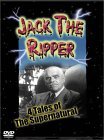
Jack the Ripper (1958) 
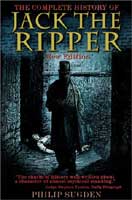
The Complete History of Jack the Ripper  by Philip Sugden Adding more new material for his Complete History of Jack the Ripper, crime writer and historian Philip Sugden already has painstakingly uncovered much new and hitherto neglected material, including a new Ripper sighting, a possible earlier assault, and a potential American connection. by Philip Sugden Adding more new material for his Complete History of Jack the Ripper, crime writer and historian Philip Sugden already has painstakingly uncovered much new and hitherto neglected material, including a new Ripper sighting, a possible earlier assault, and a potential American connection.

Portrait of a Killer: Jack the Ripper-- Case Closed  By Patricia Cornwell "No doubt there will always be skeptics, and critics tainted by self-interest who will refuse to accept that [Walter] Sickert was a serial killer, a damaged diabolical man driven by megalomania and hate. There will be those who will argue that it's all coincidence. As FBI profiler Ed Sulzbach says, 'There really aren't many coincidences in life. And to call coincidence after coincidence after coincidence a coincidence is just plain stupid.'" Patricia Cornwell, Portrait of a Killer In Portrait of a Killer: Jack the Ripper, Case Closed, Cornwell combines the rigorous discipline of twenty-first century police investigation with forensic techniques undreamed of during the late Victorian era to solve one of the most infamous and difficult serial murder cases in history. medical procedures Sickert was forced to endure and reflects on the impact they might have had on the young boy. She also explores the ways in which women might have served as a dangerous reminder of his infuriating and humiliating abnormality. By Patricia Cornwell "No doubt there will always be skeptics, and critics tainted by self-interest who will refuse to accept that [Walter] Sickert was a serial killer, a damaged diabolical man driven by megalomania and hate. There will be those who will argue that it's all coincidence. As FBI profiler Ed Sulzbach says, 'There really aren't many coincidences in life. And to call coincidence after coincidence after coincidence a coincidence is just plain stupid.'" Patricia Cornwell, Portrait of a Killer In Portrait of a Killer: Jack the Ripper, Case Closed, Cornwell combines the rigorous discipline of twenty-first century police investigation with forensic techniques undreamed of during the late Victorian era to solve one of the most infamous and difficult serial murder cases in history. medical procedures Sickert was forced to endure and reflects on the impact they might have had on the young boy. She also explores the ways in which women might have served as a dangerous reminder of his infuriating and humiliating abnormality.

Jack the Ripper: The 21st Century Investigation by Trevor Marriot -- Over the last century, there have been countless attempts to solve the brutal
murders committed by Jack the Ripper. What this most famous of British criminal
cases has always required is a clear, professional eye to analyze the evidence,
using all that modern forensics has to offer. Now former murder squad detective
Trevor Marriott does just that, casting aside the rumors, fantasies, and urban
legends—with startling results. He asserts that the tally of victims may be far higher than previously believed, and that the real killer, a completely new suspect, had unique access to the area of the murders. by Trevor Marriot -- Over the last century, there have been countless attempts to solve the brutal
murders committed by Jack the Ripper. What this most famous of British criminal
cases has always required is a clear, professional eye to analyze the evidence,
using all that modern forensics has to offer. Now former murder squad detective
Trevor Marriott does just that, casting aside the rumors, fantasies, and urban
legends—with startling results. He asserts that the tally of victims may be far higher than previously believed, and that the real killer, a completely new suspect, had unique access to the area of the murders.
|
DVD
-- He was a specter that haunted the streets of Victorian London, killing at least five women and plunging the city into panic and confusion. But despite an investigation unmatched in the annals of crime up to that time, and the ongoing efforts of criminologists, scholars and hobbyists ever since, his identity has never been established. This plunges into the mysterious world of the notorious killer, visiting the places where his victims were found and showing shocking photos that capture the brutality of his crimes. With the help of world-renowned Ripper scholars, we'll examine the various theories about who this Victorian nightmare really was, and why he was never caught.
DVD The streets of London are filled with shrieks of terror in this atmospheric shocker from cult director Jess Franco (Vampyros Lesbos). Klaus Kinski (Nosferatu) stars as a respectable Victorian doctor whose nocturnal activities include the stalking and butchering of prostitutes, with Scotland Yard hot on his trail. Josephine Chaplin (The Canterbury Tales) co-stars as the innocent woman placed as bait in the Ripper's path, with Lina Romay as one of the hapless victims.
by Philip Sugden Adding more new material for his Complete History of Jack the Ripper, crime writer and historian Philip Sugden already has painstakingly uncovered much new and hitherto neglected material, including a new Ripper sighting, a possible earlier assault, and a potential American connection.
By Patricia Cornwell "No doubt there will always be skeptics, and critics tainted by self-interest who will refuse to accept that [Walter] Sickert was a serial killer, a damaged diabolical man driven by megalomania and hate. There will be those who will argue that it's all coincidence. As FBI profiler Ed Sulzbach says, 'There really aren't many coincidences in life. And to call coincidence after coincidence after coincidence a coincidence is just plain stupid.'" Patricia Cornwell, Portrait of a Killer In Portrait of a Killer: Jack the Ripper, Case Closed, Cornwell combines the rigorous discipline of twenty-first century police investigation with forensic techniques undreamed of during the late Victorian era to solve one of the most infamous and difficult serial murder cases in history. medical procedures Sickert was forced to endure and reflects on the impact they might have had on the young boy. She also explores the ways in which women might have served as a dangerous reminder of his infuriating and humiliating abnormality.
by Trevor Marriot -- Over the last century, there have been countless attempts to solve the brutal
murders committed by Jack the Ripper. What this most famous of British criminal
cases has always required is a clear, professional eye to analyze the evidence,
using all that modern forensics has to offer. Now former murder squad detective
Trevor Marriott does just that, casting aside the rumors, fantasies, and urban
legends—with startling results. He asserts that the tally of victims may be far higher than previously believed, and that the real killer, a completely new suspect, had unique access to the area of the murders.



















